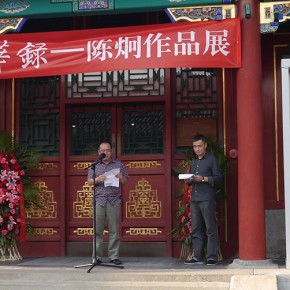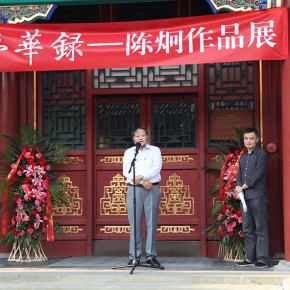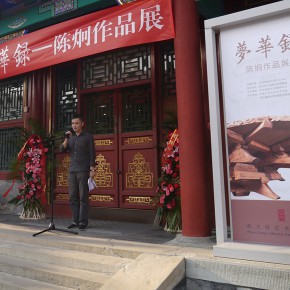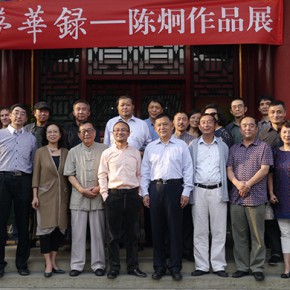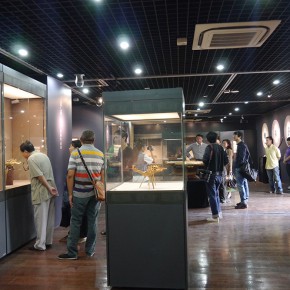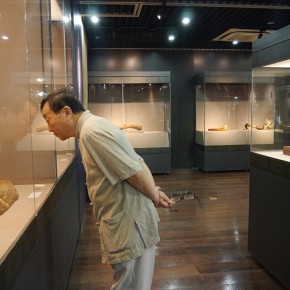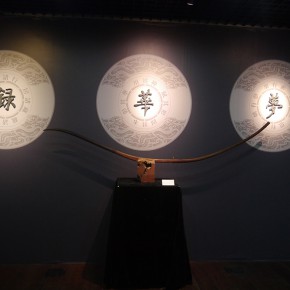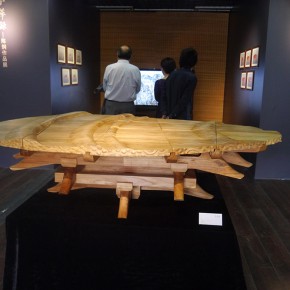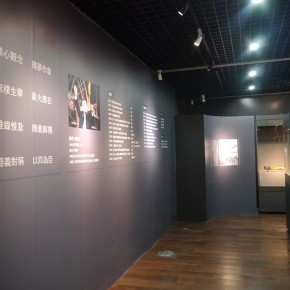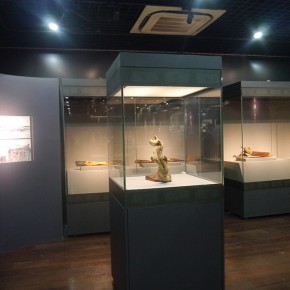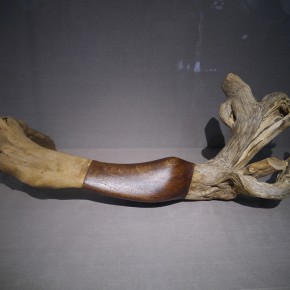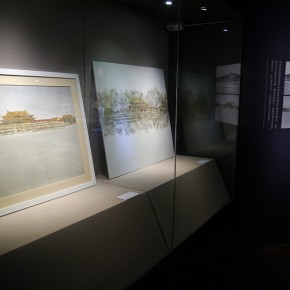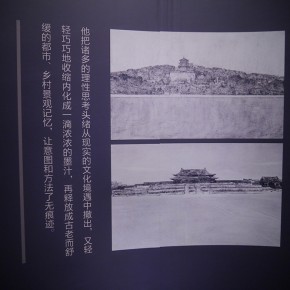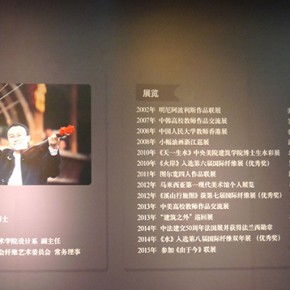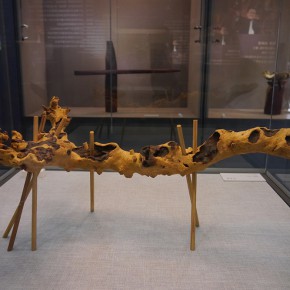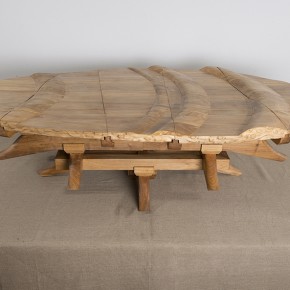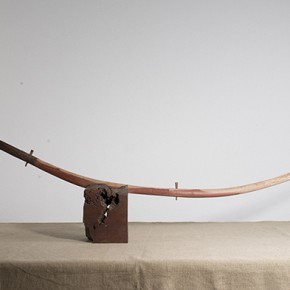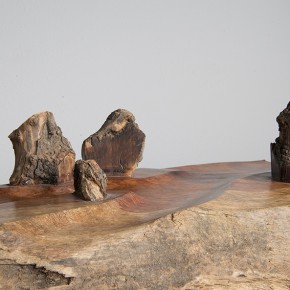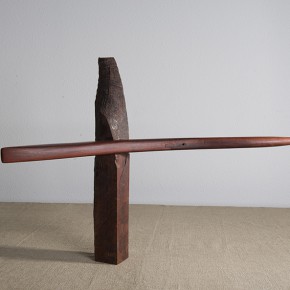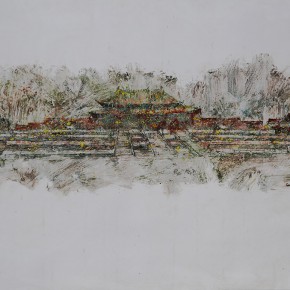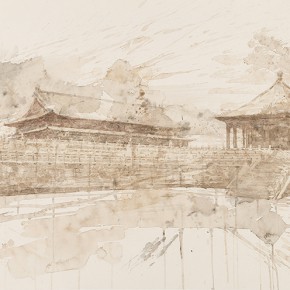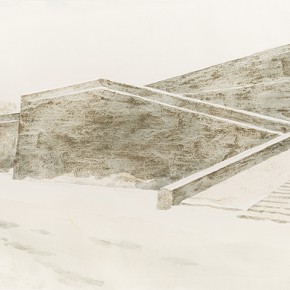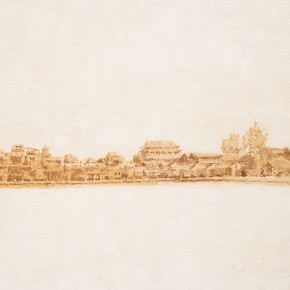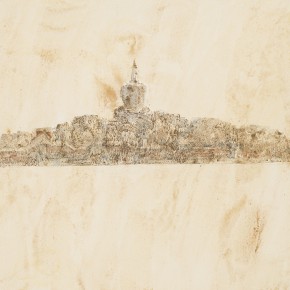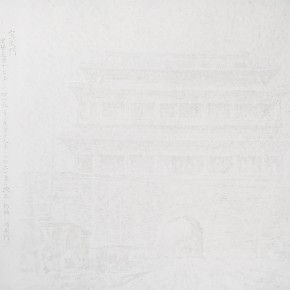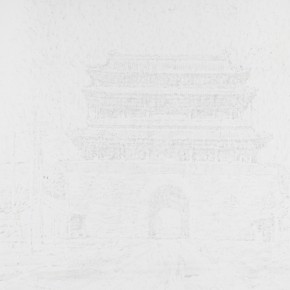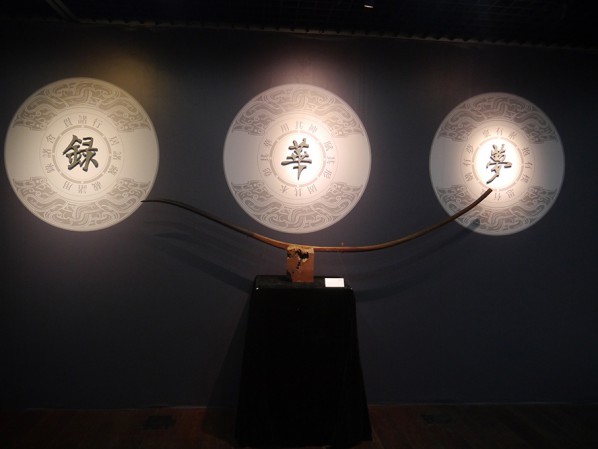
At 4:00 p.m. on the afternoon of September 14, 2015, "A Floral Remembrance", the personal exhibition of Chen Jiong, the associate Professor of School of Arts, Renmin University of China, was held in Ledao Tang and the side hall, Prince Gong's Mansion.
The exhibition was organized by Prince Gong's Mansion Management Center, Chinese Ministry of Culture and co-created by the School of Arts, Renmin University of China and the Exhibition Center of Literature and Art Association, Zhejiang Shaoxing. It was the first personal exhibition of Chen Jiong, presenting 30 paintings and wooden constructions created in recent years. As an architect, Chen Jiong’s works have a close connection with architecture. One series is about the ancient urban landscape of old Beijing, while another is composed of wooden installations.
A number of leading professors from the School of Arts, RUC, Academy of Arts & Design, THU and CAFA were invited to attend the opening ceremony: Bian Wei, deputy director of Prince Gong's Mansion Management Center, Professor Zhang Baowei, doctoral tutor of CAFA, Cui Jizhe, former vice president of Xinhua News Agency, Professor Wang Hongjian, Academy of Arts & Design of THU, Professor Wang Nengxian, former vice president of the China Art Research Institute, Professor Wang Zhong, City Design School of CAFA, secretary Professor Wang Yingsheng, school of CAFA, Professor Ding Fang, Dean of the School of Arts, RUC, Professor Zhao Fang, Vice President of School of Arts, RUC, Professor Huang Huasan, Vice President of the School of Arts, RUC, Tang Keyang, independent curator and Professor Chen Hao, Shaoxing City Federation creative director of the exhibition center and Shaoxing college of arts and science. Bian Wei, Deputy Director, was mentioned in his statement, "There are a variety of distinctive characteristics in these two series. Abstract factors were injected into figurative structures in wooden installations. Simplicity is the ultimate sophistication. Endowed with smart creative ideas, Chen’s works skillfully keep the original feature of timber and the beauty of the nature of ancient times. His dreamlike brushwork, which expressed the remembrance of the old Beijing city, brings people back to the old days, in harmony with the atmosphere of Prince Gong's Mansion." Chen Jiong summed up the exhibition with two words "gratitude" and "movement" at the end of the ceremony.
The ancient landscape of the old Beijing city like the Summer Palace, The Forbidden City, Xuanwu gate, ancient wall of the city and Taihe was painted in Chen’s works. Wang Minan, a critic, called these pictures building plans. In his opinion, a large number of empty spaces in these works introduced the time element into the paintings and the fuzzy contour of the architecture indicated the history of the ancient landscape. This series seized the features of innocent comics and traditional landscapes which made the picture full of a sense of nostalgia. Chen’s art works told a story about the past which was about to be forgotten. In this story, we can see the past landscape, time, lives, and even the paint itself.
Jiang Zhe from China University of Geosciences thinks it was a brave and intelligent choice of intervention in contemporary art from the perspective of landscape. In this case, we can discuss the social nature of contemporary art over a long distance of time. Different from the way some of contemporary artists do as “Taohuayuan”, Chen’s works rationally and comprehensively focus on the natural environment, historical culture, personal emotions and cultural memories. Withdrawing rational thinking from the realistic cultural situation, Chen Jiong condensed his mind into a thick ink drop and painted the ancient and soothing urban and rural landscape from memory. Without the tragic and the grand, Chen’s works solidly show an attitude and realize the cultural metaphor of a drop of ink.
The display of the wooden installation was divided into two series, “He” and “Water”, which can be combined. In Chen Jiong’s view, there is "temperature" in the way to create a traditional Chinese wooden structure. In some aspects, the end of the life of a tree just means the beginning of the life of timber houses and furniture. The "temperature" lives always transfer between the natural and artificial environment, they move in circles. It’s not only the tradition of the Chinese way to creating a zone, but also a presentation of an old idea. It, in fact, becomes an emotion when a concept goes into the field of collective unconscious for a long time. Then it becomes the most secretive motive that influences the behavior of our words and deeds.
The link between painting and carpentry is pretty much about the old city when it comes to Chen Jiong. Both painting and carpentry are derived from the shaking and crumbling figure of the deserted wooden city. For one it is “paint it”, for another it is “do it”. The word “do” has no relationship with the word “useful”. This is not the typical way for the impression of pictures to show the image of what things should look like. Withdrawing rational thinking from the realistic cultural situation, the artist condensed his mind into not only an abstract but also compact form, no matter when painting or making wooden constructions.The lives of Chen Jiong’s works are full of temperature during the invasion, which shows the artistic conception of the traditional China type of zoning as well.
Text and photo by Ye Yuanfeng, edited by Sue/CAFA ART INFO


